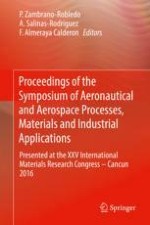2018 | OriginalPaper | Chapter
Corrosion Behavior of Austempered Ductile Iron Used in the Aeronautical Industry Evaluated on Acid Solutions
Authors : Rodolfo Rocha-Reséndez, J. A. Cabral-Miramontes, C. Gaona-Tiburcio, P. Zambrano-Robledo, F. Estupiñan-López, F. Almeraya Calderon
Published in: Proceedings of the Symposium of Aeronautical and Aerospace Processes, Materials and Industrial Applications
Publisher: Springer International Publishing
Activate our intelligent search to find suitable subject content or patents.
Select sections of text to find matching patents with Artificial Intelligence. powered by
Select sections of text to find additional relevant content using AI-assisted search. powered by
